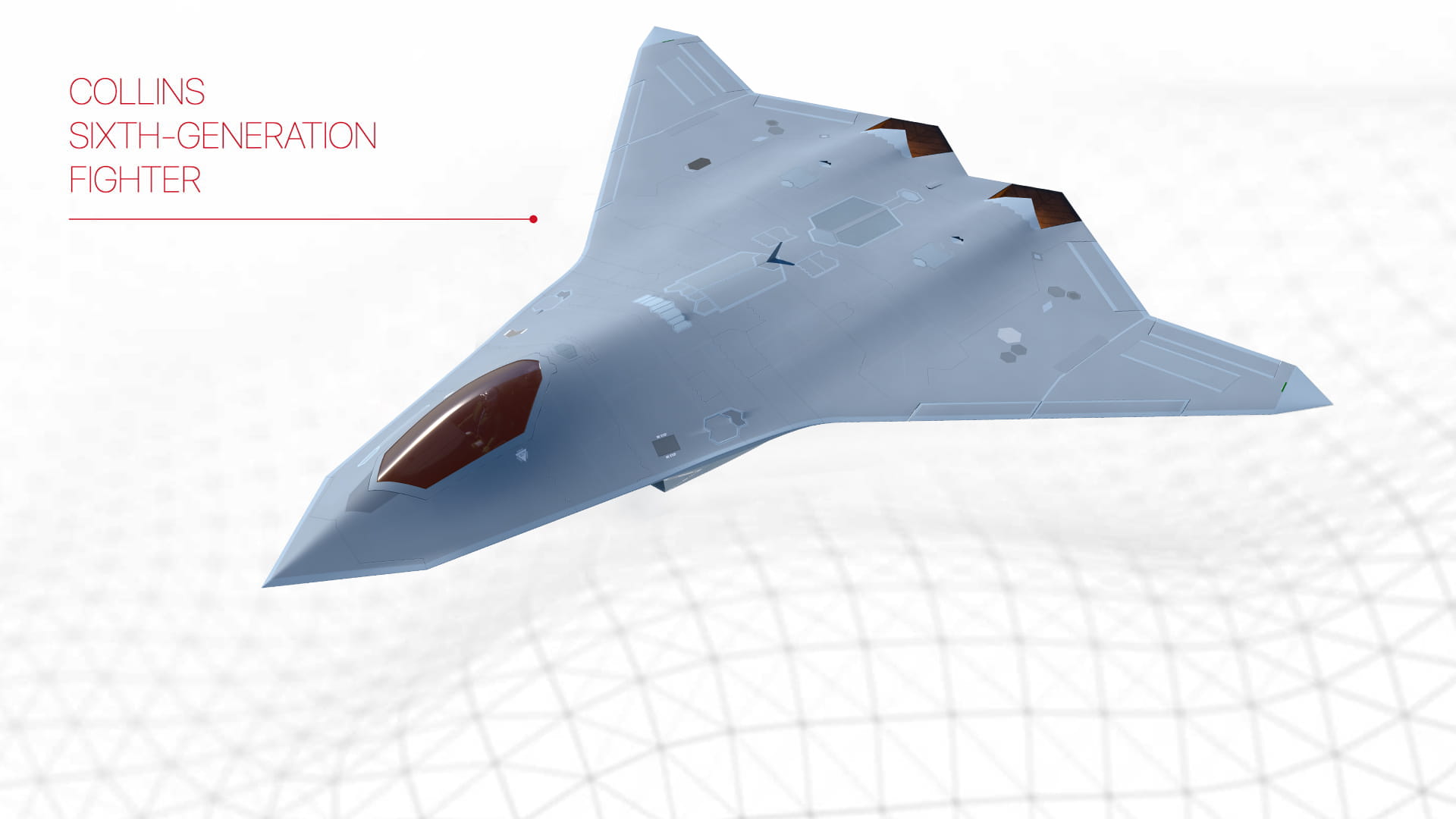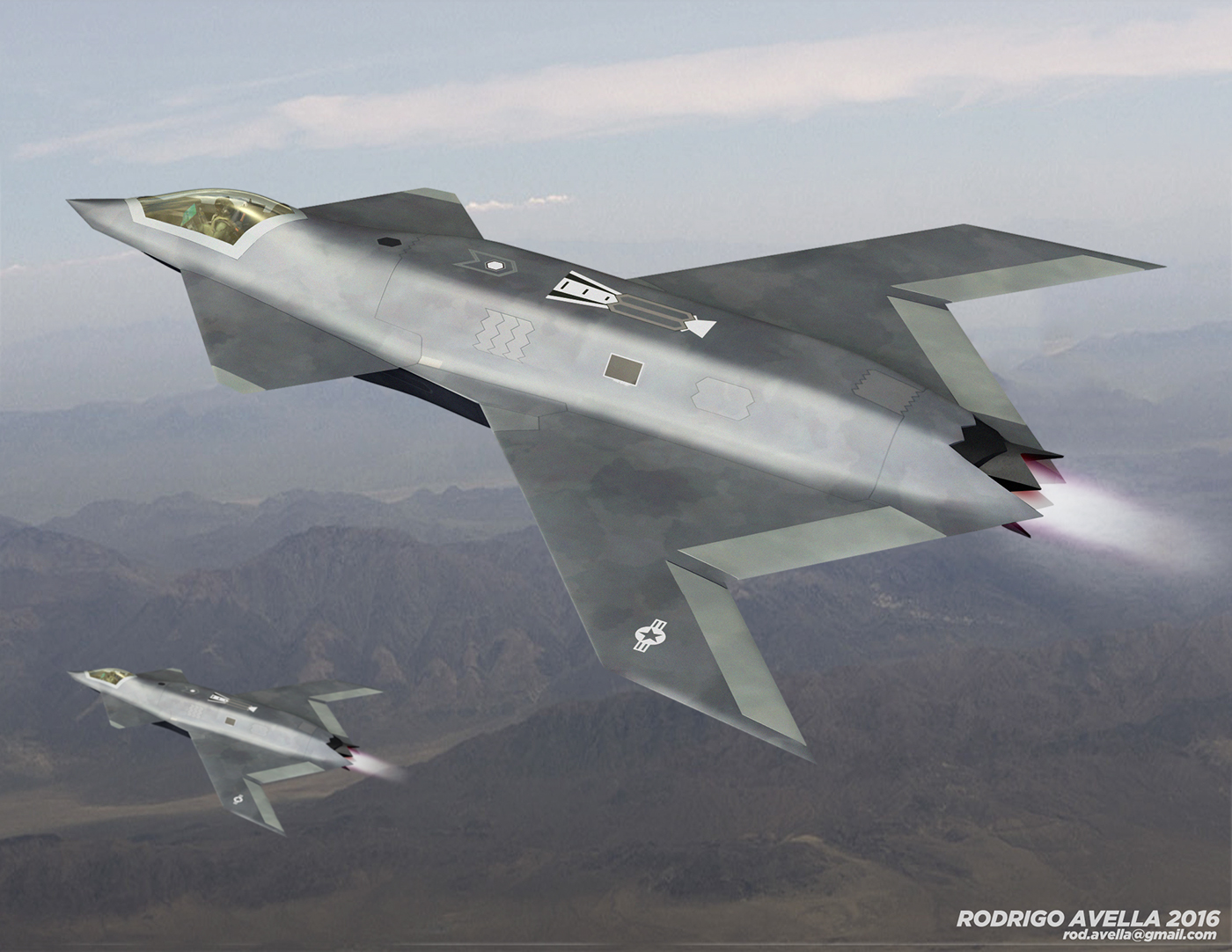Us 6th Generation Fighter Jets - The US Navy's Navy Aviation Vision 2030-2035 document sheds light on the Navy's newest fighter, the 6th generation Boeing F/A-XX.
Although the document only contains a small image of the F/A-XX, we can glean some details about the aircraft.
Us 6th Generation Fighter Jets

The design is unlike any previous US Navy aircraft design. The fighter has canards and a hybrid delta-lambda wing pattern just behind the cockpit. In contrast to earlier F/A-XX concept art that showed a wingless design, this single image shows a rear-mounted fuselage, possibly with rudder vator. But to be sure, the image is a bit low resolution.
Sixth Generation' Fighters Jets Are Already Taking Shape
Although it can fly unmanned, the F/A-XX still retains a traditional cockpit. It also has a twin-engine design somewhat reminiscent of the F-22 Raptor fighter jet, with rectangular, thick vector exhaust nozzles.
In addition to the individual image, the Navy also outlined the role the F/A-XX will play in the Navy's future fleet, explaining that the Navy's family of next-generation air systems revolves around the F/A-XX, as a "quarter." do it
Manned and unmanned aircraft, "plus related assets, are used across domains to provide integrated kinetic and non-kinetic fires at tactically relevant ranges. As autonomy and ML efforts mature, an appropriate mix of F/A-XX platforms, manned and the drone is being evaluated to provide the CVW (Carrier Air Wing) with the most lethal and affordable possible.
When it enters service, the F/A-XX is likely to be the world's first sixth-generation fighter. With a range of features as well as a comprehensive stealth package, the aircraft will stand out from other fighters. However, the new aircraft will not only replace the Lockheed Martin F-35 Lightning II stealth aircraft and even the F/A-18 Super Hornets.
The Air Force Is Spending Big Money On A 6th Generation Stealth Fighter
Navy Carrier Air Wings will fly a diverse mix of aircraft, including Super Hornets, F-35s and the new F/A-XX, at least until 2035, or perhaps even later, when the Super Hornets are retired. In fact, the Navy continues to rely on the F-35C. "The F-35C will serve as an invaluable force multiplier for the CSG from 2030 onwards" and the Navy's "strike platform of choice" for now. Additionally, the F-35 and F/A-18 work together to allow the legacy fighter design to be a "more viable and lethal platform [using] the stealth and passive reconnaissance capabilities of the F-35C to shape the overall air picture."
It should be remembered that the Navy's preliminary image is a single image and not necessarily authoritative. The concept art so far has changed dramatically from the delta tail wing design to this latest and possibly canarded aircraft design. Changes - even drastic changes - to what the F/A-XX will ultimately look like are not to be expected, but to be expected.
. Based in Berlin, he covers the intersection of conflict, security and technology, focusing on US foreign policy, European security and German society. Video above: Warrior Maven's exclusive interview with U.S. Air Force Maj. Gen. and Commander of the U.S. Air Force Lab Research Force, Heather Pringle

(Washington, DC) The Air Force may be able to build several manned variants of the next-generation Air Dominance 6th generation fighter and a small family of wingman-type support drones over time, but the stealth aircraft program continues to grow. to the future.
Did Northrop Grumman Just Unveil A New 6th Generation Fighter Jet?
Delivery schedules and delivery phases are still in flux, but we can probably expect rapid development of the new aircraft, whose demonstrator has already taken to the skies.
Described as a "family of systems", the NGAD will consist of a stealthy manned combat platform and a small number of multi-role aircraft operated by the Joint Combat Aircraft (CCA) that will probe enemy air defenses, target high-risk areas and transmit with advance control. a weapon that humans direct and control in a manned aircraft.
Andrew Hunter, the Air Force's chief of acquisitions, said the NGAD's manned platform itself will likely be in place by the end of the decade, with the CCA coming soon after. The industry has already invested significantly in its R&D and is preparing for the race to build a new family of drones.
Air Force Secretary Frank Kendall says the new 6th generation unmanned aerial vehicles will likely control more than five unmanned aerial vehicles (CCAs) from the cockpit at the same time.
Coming Soon: A Us Competition For Sixth Gen Drone Wingman Could Begin In Fy24
"You can think of him (the pilot) as a defender or a play-caller for that formation. And you can equip this mob of killers with different mission systems and sensors, including all kinds of weapons... and you can use them creatively. "and create a very difficult challenge for the adversary," Kendall told Warrior Maven at the 2022 Air Force Association Symposium.
The ability of manned fighters such as 5th generation fighters to control the flight path and sensor payloads of multiple drones is coming soon, if not already here, and the concept is that a paradigm-shifting next-generation fighter is rapidly developing. , with unparalleled stealth, maneuverability and lethality, which can extend and extend its combat capabilities by controlling multiple drones.
Hunter explained that the NGAD program will adapt and evolve over the coming years as demand evolves and threats change.

"Are there two versions of manned platforms? We really want to think about that. The first order of business is to deliver a manned platform. We're evaluating along the way because there's an increasing approach to the possibility of alternatives," Hunter says.
Uk, Italy And Japan Merge 6th Gen Fighter Program
On the issue of alternatives, one possibility being discussed is the possibility of a larger, longer Pacific option that would have to travel large distances across the ocean without refueling, but still operate with sufficient speed, stealth and agility. prevail in a potentially large force operation. While the Pacific Ocean is a vast and seemingly endless expanse of seas, territories and islands, Europe is much smaller, more compact and easily accessible from many countries. In addition, the large amount of land in Europe means that aircraft can easily stop and refuel or refuel while flying over authorized allied and non-combat areas. These tactical situations describe slightly different operational requirements for a 6th generation aircraft in Europe compared to the Pacific, hence the possibility of two options. Given that the NGAD program is described in terms of a "family of systems," the evolution seems to make sense and is within the scope of creating different options for each theater.
Kendall said the manned version of the 6th-generation Next-Nage Air Dominance system will control more than five drones at a time, which appears to be an operational scenario that introduces new tactics and massively expands the scope of the mission. a stealth fighter and enables dispersed but networked weapons and control nodes to increase attack and reconnaissance capabilities.
Many of the details and exact configurations of this small family of manned and unmanned platforms are either unavailable for security reasons or still somewhat under development... or both. Unmanned systems being built to support 6th generation aircraft are likely to emerge much closer than the manned manned alternative. Of course, the requirements for the unmanned systems, called Joint Strike Fighters, are still in flux, but Air Force Acquisition Director Andrew Hunter told reporters that the drones are being built to basic operational requirements.
"We need an aircraft that can operate in a confined space and make sure we have the ability to organize freedom of maneuver. We've had successful drone platforms going back decades. It's difficult to have a platform that can operate in a denied airspace," says Hunter .
Sketching The 6th Generation Fighter Jet
Drones, or CCAs, come in a variety of sizes and serve as surveillance "nodes" as well as "attack" drones that carry out attack and shooting missions.
"We need a platform that's affordable so we can get some mass, not something so expensive we can't afford it. We're in the design business. It has to be able to support the mission with the NGAD system. and it has a weapon that can work with a piloted aircraft, says Hunter.
While the manned NGAD is expected to be operational by the end of the decade, the CCAs could be "soon," Hunter said. "Industry Expands R&D and Prepares for Acquisition Program."

The prospect of multiple networked CCAs working in close coordination with a manned "host" aircraft creates new tactical opportunities as they are linked to each other as well as to a manned aircraft performing command and control. Controlling drones from the air reduces latency by eliminating the need to send data via a ground station, streamlining time-sensitive data and greatly shortening sensor-to-fire time. For example, an armed drone can autonomously identify a target, use onboard computing, and allow a human decision maker to locate and destroy enemy targets from a safe distance. Advanced algorithms and data processing with AI can analyze a number of mission variables from different or separate streams of incoming sensor information.
Uk And Japan Join Forces On Sixth Generation Fighter Jet Engine
. Osborne previously worked at the Pentagon as a senior specialist in the Office of the Assistant Secretary of the Army for Acquisition, Logistics and Technology. Osborne also worked as an anchor
Second degree assault washington state, 2nd degree assault sentence, 2nd degree aggravated assault, 2nd degree assault mn, 2nd degree assault, 2nd degree assault definition, 3rd degree assault washington state, 4th degree assault washington state, 2nd degree felony assault, 4th degree assault washington, what is assault 2nd degree, 2nd degree assault charges
